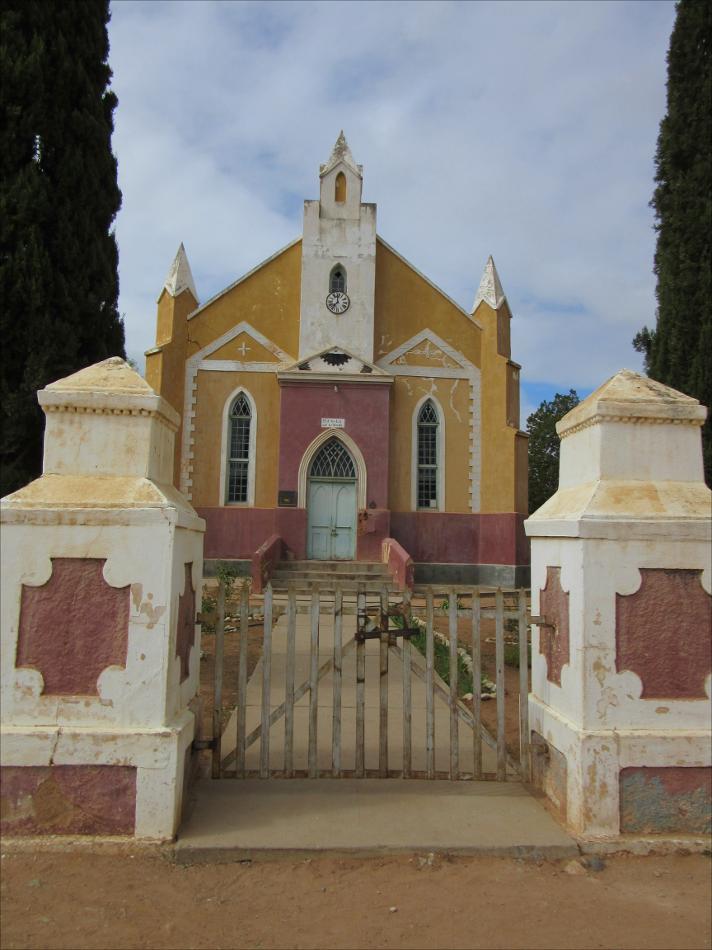Kannaland, Amalienstein, Lutheran Curch

View/
Format Extent
14 colour photographs1 spreadsheet
Rights
These items are subject to copyright protection. Reproduction of the content, or any part of it, other than for research, academic or non-commercial use is prohibited without prior consent from the copyright holder.Stellenbosch University
Metadata
Show full item recordAbstract
Amalienstein, Lutheran Church
The Lutheran Church used to belong to the Berliner Missionsgesellschaft (BMS). The BMS bought the land adjacent to Zoar from the South African Missionary Society to set up its own station and named it "Amalienstein", after its benefactress, Frau Amalie von Stein. In 1853 a church, a school and a set of houses has been constructed. There are two bell towers, at the left and the right side of the church. Both are in a horseshoe construction. From the picture it is clear that both towers carry a bell. In the book by Ed. KRATZENHEIM, Kurze Geschichte der Berliner Mission in Süd-Afrika, Berlin 1878, Selbst-Verlag des Missionshauses on page 37 is a picture with a sketch of the church in Amalienstein where on the left of the entrance stands a wooden structure with a bell. This creates the suspicion that one of the two current bells might be substantially older than the other.
Having a closer look at the bell on the right shows a simple bell with moulding rings on the crown, on the sounding bow and above it. But apart from that there are no further decorations. It is not obvious that this bell should have been the oldest one and further research on this is necessary.
The bell on the left however reveals more of its secrets. As the pictures show, the bell is nicely decorated. Also the canon consists of 6 carefully carved angle heads, not quite as pretty as those of the Gruhl bells but still. Below the crown is a broad decorated band. Below it a moulding ring and a band of drops pointing downwards. On the waist one reads
Gegossen von C.Voss
in Stettin 1868
showing that the bell has been made in the foundry of Carl Voss from Stettin, formerly a city in Germany but now in Poland with the name Szczecin. This foundry has made more than 3500 bells over the period 1847-1933. It has been a custom of the foundry to number the bells and to put a date on them. On the reverse waist we read
No.397
There are 6 other bells from the same foundry in Heidelberg, Ladismith, Albertinia, Mossel Bay, Herbertsdale and Kerkplaas. It seems indicative that the Voss-foundry had good relations with the BMS in South Africa.
Collections
- Kannaland [11]
